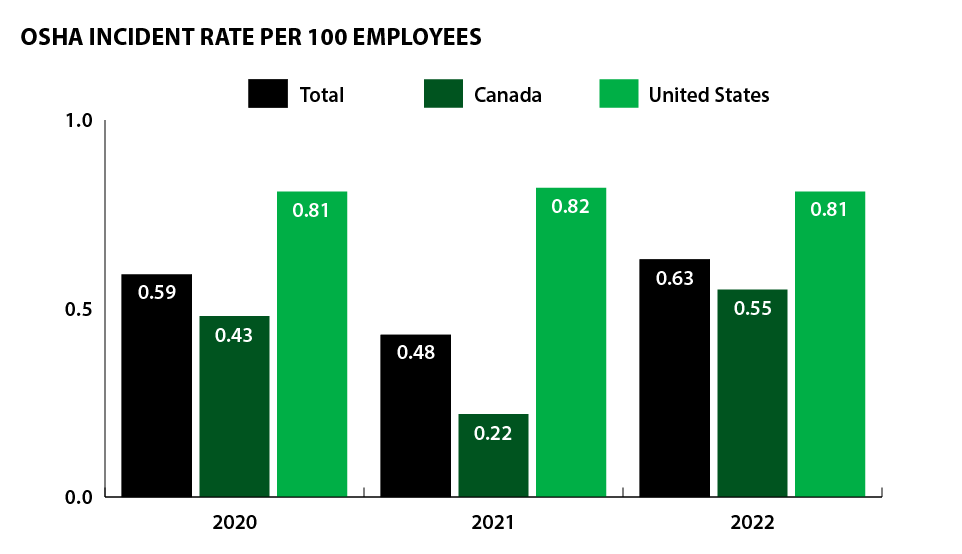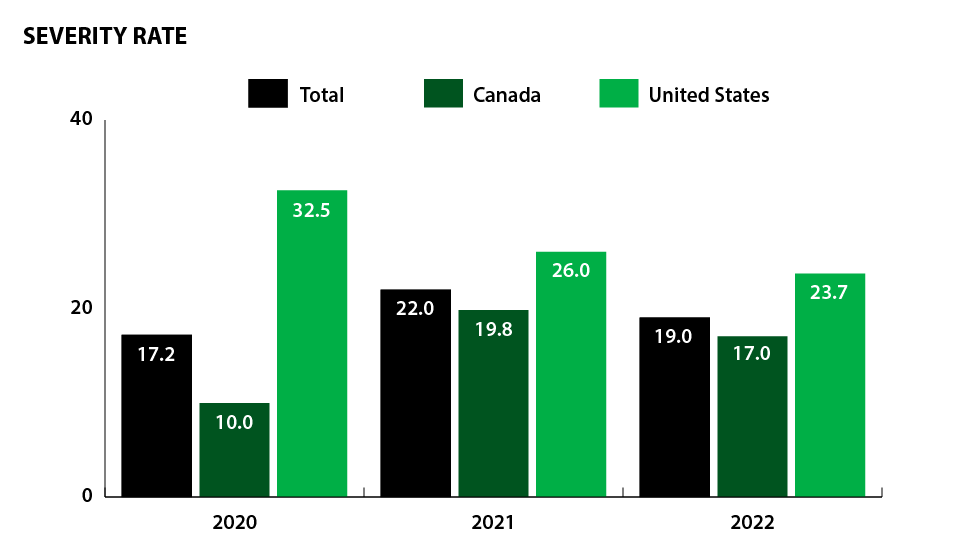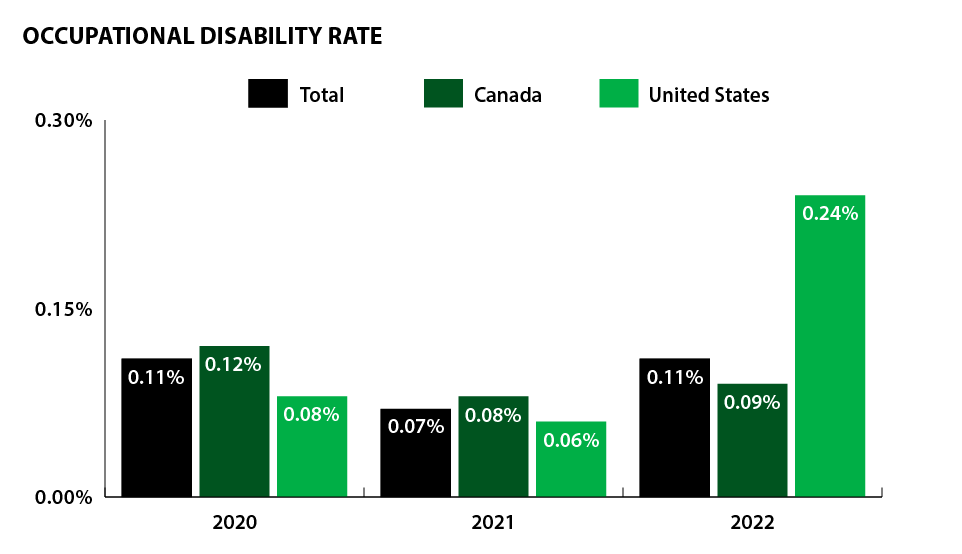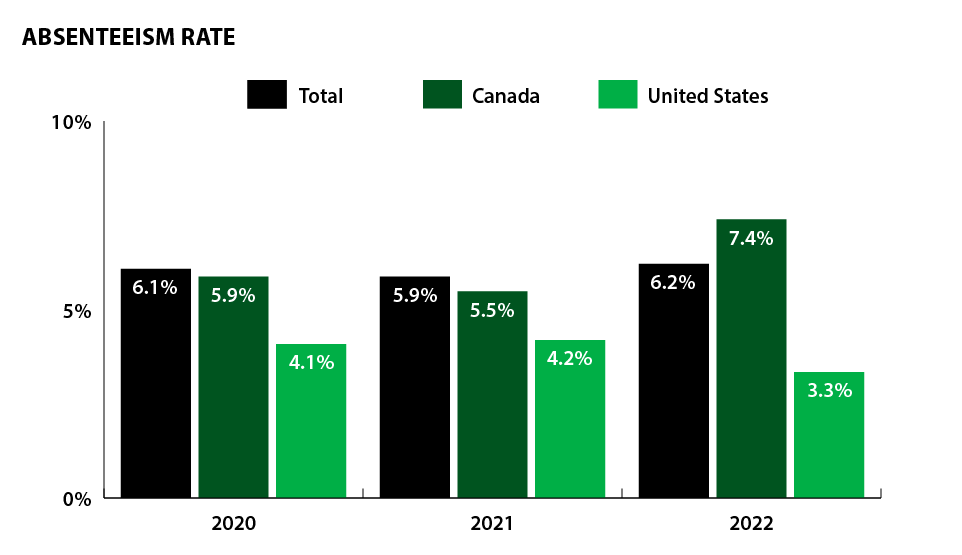Safety Performance
Safety is a core value at Resolute. Every employee – from the mill floor worker to the president and chief executive officer – is responsible for identifying potential safety hazards and helping create an injury-free workplace. We maintain world-class standards and continuously measure and improve our safety efforts and results.
We take a proactive approach to risk control by combining management and supervision with individual accountability, supported by a stringent safety management system that includes employee training and awareness, audits and monitoring, as well as employee participation through local joint health and safety committees.
Our safety audit process requires supervisors to review individual performance with employees six times a year based on six quality-execution criteria. We can then track the number of facilities reporting risk of injury as well as the effectiveness of the safety audit process at each facility. Risk assessments are also undertaken on our operations’ service providers, including maintenance and transportation contractors.
Recordable Incidents and Severity of Injuries
Since 2014, we have achieved annual Occupational Safety and Health Administration (OSHA) recordable incident rates below 1.0, considered world-class. In 2022, we recorded an OSHA incident rate of 0.63, just above our target of 0.60. Twenty-four operations – more than half of our facilities – completed the year without a single, recordable injury, including our Menominee (Michigan) recycled pulp mill, whose employees achieved two million consecutive hours without incident, an achievement that spans close to 10 years.

The company’s severity rate1 – indicating the number of workdays lost or restricted due to injury per 100 full-time employees – was 19.0 in 2022. This is equivalent to 1,204 lost or restricted workdays, or 19 workdays per 100 full-time employees.

We continue to work diligently to reduce the severity of injuries and the number of incidents. Our 2023 target is to achieve an OSHA incident rate of 0.55 or below and a severity rate of 16 or below. We have also set longer-term performance-driven targets for 2026:
- Achieve an OSHA incident rate of 0.40 or less
- Reach 30 million hours without a recordable incident across company operations
- Donate at least $1 million to charitable community organizations through our Safety Award Program
Occupational Disability and Absenteeism
Resolute also measures and reports occupational disability and absenteeism rates. Occupational disabilities include any illness attributable to the workplace or work activity, including stress or exposure to harmful materials, as well as work-related injuries. Absenteeism includes any days missed outside permitted holidays or other permitted absences.


Near-Miss and Procedures Reporting
Last year, 91% of hourly employees submitted at least two near-miss incident reports. Of the reports submitted, 91% were reviewed and closed, with the balance to be reviewed in early 2023. Our goal for 2023 is to ensure 100% of hourly employees submit at least two proactive near-miss reports and to review and close 75% of submitted near-miss reports.
In addition, 92% of hourly employees analyzed and reviewed a minimum of two job safety analyses (JSA) or safe operating procedure (SOP) reports; 99% of employees were assessed on the quality of their Pre-Job Risk Analysis (PJRA) according to six quality criteria; and 98% performed at least one house keeping action on their daily shift to ensure a healthy and safe work environment.
In 2023, we are committed to ensuring 100% of our operations review at least 10 JSA or SOP reports that meet the company's stringent quality criteria.
- The severity rate is calculated by adding the number of workdays lost to the number of restricted workdays due to injury, multiplied by 200,000 hours worked, divided by total number of hours worked.